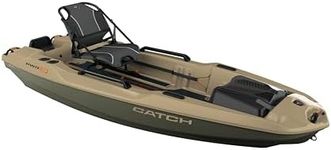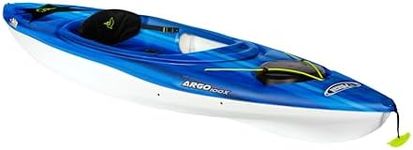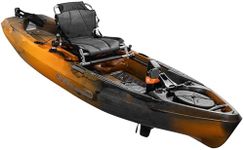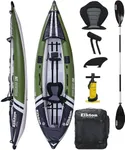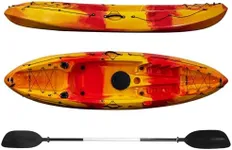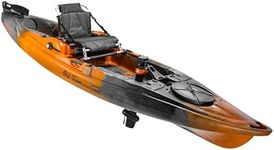Buying Guide for the Best Small Kayaks For Adults
Choosing the right small kayak for adults involves understanding your specific needs and preferences. Whether you're looking for a kayak for recreational paddling, fishing, or exploring, it's important to consider various factors that will affect your experience on the water. By focusing on key specifications, you can find a kayak that offers the best fit for your activities and comfort level.LengthThe length of a kayak affects its speed, stability, and maneuverability. Shorter kayaks (under 10 feet) are more maneuverable and easier to transport, making them ideal for beginners and those paddling in small lakes or rivers. Medium-length kayaks (10-12 feet) offer a balance between speed and stability, suitable for recreational use and light touring. Longer kayaks (over 12 feet) are faster and track better, making them suitable for more experienced paddlers and longer trips. Choose a length based on your paddling environment and skill level.
WidthThe width of a kayak, also known as its beam, influences its stability and speed. Wider kayaks (over 30 inches) are more stable and easier to balance, making them great for beginners and activities like fishing. Narrower kayaks (under 28 inches) are faster and more efficient in the water, suitable for experienced paddlers and those looking for a more dynamic experience. Consider your balance and comfort level when choosing the width of your kayak.
Weight CapacityWeight capacity refers to the maximum weight a kayak can safely carry, including the paddler and any gear. It's important to choose a kayak with a weight capacity that exceeds your body weight and the weight of your equipment. For example, if you weigh 180 pounds and plan to carry 20 pounds of gear, look for a kayak with a weight capacity of at least 220 pounds. This ensures safety and optimal performance on the water.
MaterialKayaks are made from various materials, each with its own advantages. Polyethylene plastic is durable and affordable, making it a popular choice for recreational kayaks. Composite materials like fiberglass and carbon fiber are lighter and offer better performance but are more expensive. Inflatable kayaks, made from durable PVC or similar materials, are portable and easy to store. Choose a material based on your budget, performance needs, and storage options.
Type of KayakThere are different types of kayaks designed for specific activities. Recreational kayaks are stable and easy to use, ideal for casual paddling on calm waters. Touring kayaks are longer and designed for speed and efficiency, suitable for longer trips and open water. Fishing kayaks come with features like rod holders and extra storage. Whitewater kayaks are short and maneuverable, designed for navigating rapids. Consider your primary use for the kayak when choosing the type.
Seat ComfortThe comfort of the seat is crucial for an enjoyable kayaking experience, especially on longer trips. Look for kayaks with adjustable, padded seats that provide good back support. Some kayaks offer high-back seats or additional lumbar support, which can be beneficial for those with back issues. Test the seat if possible, or read reviews to ensure it meets your comfort needs.
Storage OptionsStorage options in a kayak are important for carrying gear, especially on longer trips. Look for kayaks with built-in storage compartments, bungee cords, and dry storage areas to keep your belongings secure and dry. Consider the amount of gear you plan to bring and choose a kayak with adequate storage solutions to accommodate your needs.



